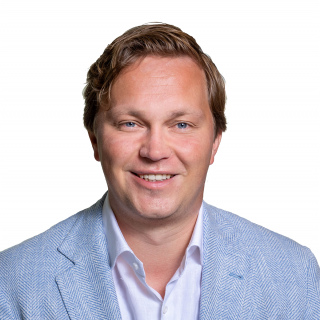Increasing fibre take-up rate most important challenge for telecoms
The European fibre rollout is steadily progressing, but the key challenge for European telecoms now will be increasing the take-up rate and maximising the return on investments
European fibre rollout is progressing swiftly
The transition from copper and DSL to fibre networks is of vital importance for digital economies. Not only is fibre more energy efficient than previous networks, but it's also the backbone of smart cities, the internet of things (IoT), and emerging industries such as fintech. Because of these benefits, the EU’s Digital Decade goals and large investments in networks, the European fibre rollout is progressing at pace. While there are a few laggards (e.g., Belgium, Greece and the Czech Republic), we expect fibre penetration rates to pass 90% in 2028 in the EU27 and the UK. This expectation is based on the pace of the rollout in recent years and investments made by telecoms across the EU.
Percentage of homes passed will pass 90% in 2028
Percentage of EU27 + UK homes with access to fibre

Five largest economies are sprinting towards Digital Decade goals
The five largest European economies are currently on track to meet their connectivity goals – as we predicted last year – as a result of significant investments. Spain and France are nearing a complete fibre rollout, and the UK and Germany have accelerated theirs.
Germany, in particular, has made great strides forwards. It was a laggard in 2022 with just 24% of homes passed, but we expect German fibre rollout to hit 59% at the end of this year. Only Italy is progressing slightly slower than we expected, but we believe it will gradually move towards a completed fibre rollout before the end of the decade.
Coverage rate expected to grow steadily in five largest European economies
Forecasted percentage of homes with access to fibre

Not rollout, but fibre take-up biggest challenge facing telecoms
The most important challenge for telecoms currently is not the fibre rollout itself, but rather increasing the rather disappointing take-up rate. In 2023, just over half of all households in the EU27 and UK opted for a fibre connection when it was available (FTTH Council Europe), which was a 1.3 percentage point increase from 2022. Given the sizeable investments in networks, this number needs to increase quicker. However, we think this will prove difficult.
We believe that a significant reason for customers’ reluctance to switch to fibre is their satisfaction with existing services from incumbent providers offering fast solutions based on xDSL and coax technologies. Increasing the take-up is therefore a particular concern for smaller, greenfield, fibre operators. Many current users are bound by existing contract terms, or find the transition to fibre optics inconvenient due to factors such as the need for new equipment, the hassle of changing email addresses, or the loss of media formats that come with current offerings. This inertia creates a barrier to adoption, even when fibre might offer superior performance. We therefore expect the take-up to increase slowly to 65% in 2028.
In our base case scenario take-up rate is expected to increase to 65% in 2028
Three scenarios for fibre take-up rate

Three scenarios for take-up rates
In recent years, more homes have been connected to fibre in the EU27 and the UK than new people have subscribed to fibre. Therefore, take-up rates as a percentage of subscribed homes have grown relatively slowly. In our base case, we see the roll-out slowing down in 2027 and 2028 as the growth of subscribers steadily continues. In our high growth scenario, additional growth is achieved through marketing campaigns and new offerings; in our low growth scenario, the roll-out continues at pace in 2027 and 2028 but consumer inertia slows growth in the number of subscribers.
Smaller and big telecoms face different challenges
Large, established telecom providers have a distinct advantage in transitioning their existing customer base to new technologies. When they upgrade their networks, they can incentivise their customers to make use of it. However, these incumbents face challenges in maintaining a nationwide service offering. Fibre networks in many regions are now rolled out by competing providers – unlike their older nationwide copper networks, which they owned and operated. In many countries, the fibre network of the incumbent therefore no longer covers the whole country.
Nevertheless, smaller telecom challengers also face structural disadvantages in promoting fibre adoption. Their limited scale reduces the ability to compete effectively, and the lack of a strong brand and a limited choice for ancillary (media) products makes it difficult to compete with larger operators. And now that interest rates are up, these companies are challenged to spend extensive amounts on the acquisition of new customers or further network upgrades.
Three strategies to accelerate fibre take-up
Fortunately, there are a few strategies that telecom companies employ to increase take-up rates. First, they use data to identify areas with high potential penetration and low deployment costs to optimise investment decisions.
Second, network operators can market their products locally. Given the hyperlocal nature of telecom competition, providers can employ hyper-personalised targeting and conversion strategies. This way, a local brand may be able to compete with a nationwide brand.
Third, the ability to offer bundled services is very important, as they offer good value to customers and favourable economics to operators. Verizon, for example, observed that customers bundling wireless service with fibre optic service had a 50% lower churn rate – the rate at which customers cease doing business with a company – compared to wireless-only customers. But customers may also appreciate the ability to source multiple products from one vendor, like, linear TV, and (streaming) media bundles offering movies, sports, news and other entertainment. Other services are also appreciated, such as W-Fi equipment and network security options. When competitors offer such services under a strong brand name, it's relatively difficult to gain a large regional market share.
Returns likely to differ
In short, the European telecom sector is moving closer to achieving complete fibre coverage, thanks to substantial public and private investments. However, increasing take-up rates and garnering a return on investments might be easier for incumbents with recognisable brand names. Meanwhile, the telecom market continues to evolve towards a more fragmented and competitive landscape, which means that telecoms need to prioritise connectivity solutions through data, strategic planning, bundled services and focused marketing.
This publication has been prepared by ING solely for information purposes irrespective of a particular user's means, financial situation or investment objectives. The information does not constitute investment recommendation, and nor is it investment, legal or tax advice or an offer or solicitation to purchase or sell any financial instrument. Read more
Tags
TelecomsDownload
Download article
15 January 2025
Telecom Outlook 2025: A high-frequency future This bundle contains 7 Articles
